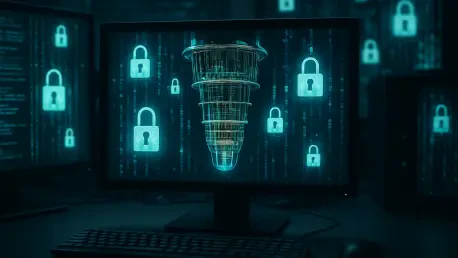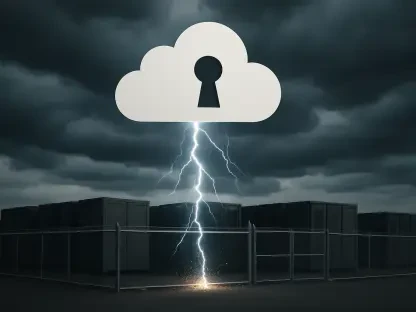Imagine a world where the encryption safeguarding sensitive corporate data, financial transactions, and national security secrets can be shattered in mere minutes by a quantum computer, a scenario no longer a distant hypothesis but a pressing concern as quantum computing advances at a rapid pace. The potential for these technologies to disrupt current cybersecurity frameworks has sparked intense debate among industry leaders, technologists, and policymakers. This roundup article dives into diverse perspectives from various sources on whether enterprises are prepared for quantum cybersecurity threats, compiling insights, opinions, and actionable tips to illuminate this critical issue.
Exploring the Quantum Threat Landscape
The Urgency of Quantum Disruption
Quantum computing’s ability to break widely used encryption methods, such as public-key cryptography, poses a significant risk to digital security across industries. Many industry voices emphasize that the timeline for quantum threats becoming a reality is shrinking, with some projections suggesting viable quantum attacks could emerge within the next decade. This urgency drives a growing consensus that preparation must begin now to protect critical infrastructure and maintain trust in digital systems.
Different stakeholders highlight varying levels of concern. While some technology experts stress the immediate need to transition to post-quantum cryptography (PQC), others in corporate sectors argue that the threat remains theoretical, prioritizing more tangible risks. This divide in perception shapes how organizations allocate resources and plan for the future, often leaving mid-sized enterprises particularly exposed due to limited budgets and expertise.
Survey Insights on Organizational Readiness
Recent data aggregated from multiple industry surveys paints a stark picture: nearly half of enterprises in North America and Europe—48%—admit to being unprepared for quantum cybersecurity threats. Mid-sized firms face the greatest vulnerability, with 56% lacking adequate defenses. Responses to these risks vary widely, with 42% of organizations taking proactive steps, 33% waiting for clearer signs of danger, 24% following the lead of competitors, and a tiny 2% planning to take no action at all.
Feedback from cybersecurity forums reveals that perception significantly influences action. Companies viewing PQC as a critical priority are twice as likely—49%—to implement protective measures compared to skeptics at 24%. These findings underscore a critical gap between awareness and execution, prompting discussions on how to bridge this divide through education and strategic investment.
Leadership and Barriers in Quantum Preparedness
Who’s Steering the Quantum Defense Ship?
Insights from various organizational studies show that leadership roles in quantum preparedness differ across enterprises. Cybersecurity teams often take the lead, with 46% driving PQC initiatives, followed by C-suite executives at 33% and board members at 22%. Input from industry panels suggests that the involvement of top executives often correlates with faster adoption of new security protocols, as their buy-in secures necessary funding and prioritization.
Motivations for action also vary, according to compiled reports. Cybersecurity concerns top the list at 54%, closely followed by the desire to maintain customer trust at 50%, reduce insurance costs at 49%, and gain a competitive edge at 48%. These drivers highlight the multifaceted benefits of early preparation, though some leaders caution that resource constraints can limit even the most motivated organizations.
Challenges Hindering Quantum Adoption
Despite growing recognition of quantum risks, numerous obstacles slow progress, as noted by diverse industry commentators. Skill shortages, time limitations, and competing priorities each affect 40% of enterprises, while 39% cite unclear industry standards as a barrier. Observations from global cybersecurity networks indicate that without clear guidelines, many firms struggle to justify the investment required for a threat that feels intangible.
International perspectives add further complexity. For instance, timelines proposed by certain national cybersecurity bodies suggest a phased transition to PQC, with key milestones set between now and 2035 for identifying vulnerabilities and completing migrations. Such long-term planning, while structured, often clashes with the short-term focus of many corporate strategies, leaving a gap in immediate action.
Dual Nature of Quantum Computing
Risks and Opportunities in Quantum Tech
Quantum computing is frequently described by technology thought leaders as a double-edged sword. On one hand, it threatens to dismantle current encryption standards, potentially exposing sensitive data to unprecedented breaches. On the other hand, it offers a chance to rebuild digital trust through innovative security frameworks, a point echoed in numerous industry white papers advocating for PQC as a cornerstone of future resilience.
Contrasting views emerge on timing. Some voices in the tech community push for immediate investment in quantum-resistant solutions to stay ahead of adversaries, while others suggest a more cautious approach, waiting for standardized protocols to mature. This tension between urgency and pragmatism shapes the strategic decisions of many enterprises, often influenced by their specific industry risks and resources.
Pioneering a Secure Future
Discussions at recent cybersecurity conferences highlight that early adopters of PQC could set new benchmarks for security standards, positioning themselves as leaders in a quantum-driven landscape. This potential for competitive advantage is a recurring theme among forward-thinking firms, though skeptics warn that premature moves without industry consensus might lead to costly missteps.
The transformative potential of quantum technology extends beyond defense. Several industry analyses suggest that leveraging quantum advancements for secure communication could redefine trust in digital transactions, offering a unique opportunity for organizations willing to innovate. This balance of risk and reward continues to fuel debates on how best to navigate the quantum era.
Practical Steps and Strategic Insights
Actionable Tips from Industry Voices
Drawing from a range of cybersecurity workshops and reports, several practical steps emerge for enterprises aiming to bolster quantum readiness. First, conducting a thorough inventory of cryptographic assets to identify vulnerabilities is critical, as outdated systems are prime targets for future attacks. Developing a detailed migration plan to PQC, tailored to organizational needs, is another widely recommended action.
Investing in talent also garners significant attention. Training existing staff or hiring specialists in quantum security can address the pervasive skill shortage, a point raised repeatedly in industry roundtables. Additionally, fostering collaboration between cybersecurity teams and executive leadership ensures alignment on priorities, helping to secure the necessary resources for long-term preparedness.
Building a Unified Approach
Cross-industry discussions emphasize the importance of a cohesive strategy to tackle quantum threats. Aligning internal stakeholders on the significance of PQC can accelerate decision-making, as noted by participants in global security forums. Engaging with external partners, such as government bodies or industry consortia, also provides access to shared knowledge and emerging standards.
Another recurring tip is to integrate quantum preparedness into broader risk management frameworks. By treating quantum threats as part of an ongoing cybersecurity evolution, rather than a standalone issue, organizations can better balance competing priorities. This holistic mindset, advocated by many in the field, helps ensure sustained focus amid shifting business demands.
Final Reflections on Quantum Cybersecurity
Looking back on the insights gathered, it is evident that the journey toward quantum cybersecurity readiness reveals a landscape of both concern and opportunity. The stark reality that nearly half of enterprises remain unprepared underscores a critical divide, while diverse leadership roles and motivations illustrate the complexity of mobilizing action. Barriers like skill shortages and unclear standards stand as formidable challenges, yet the dual nature of quantum computing offers a glimmer of hope for transformative security solutions.
Moving forward, enterprises are encouraged to take decisive steps, starting with vulnerability assessments and strategic migration plans to post-quantum cryptography. Building internal expertise and fostering collaboration across sectors emerge as vital actions to close readiness gaps. As the quantum threat continues to evolve, those who act proactively position themselves not just to survive but to thrive, redefining trust and competitiveness in a digital world on the cusp of profound change.









